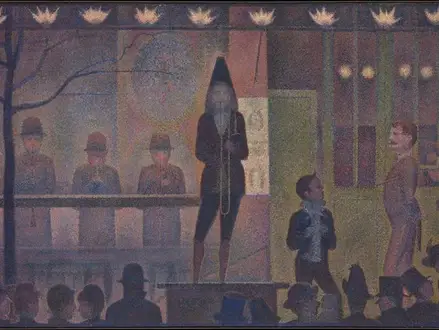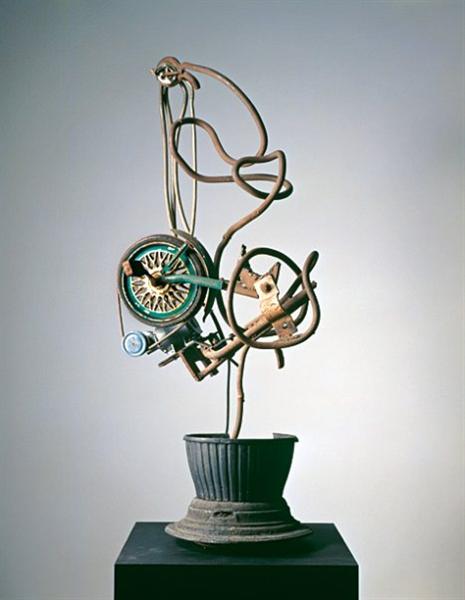Title of Artwork: “Circus Sideshow”

Artwork by Georges Seurat
Year Created 1887-1888
Summary of Circus Sideshow
Georges Seurat painted Parade de cirque (1887-1888), a Neo-Impressionist depiction of a circus sideshow. It was one of Seurat’s least admired works when it was initially shown at the Salon de la Société des Artistes Indépendants in Paris in 1888 under the title “Parade de cirque, cat. no. 614”. He painted Parade de cirque, a scene from the Circus Corvi sideshow at Place de la Nation, in his earliest representation of a nighttime setting and his first picture of popular entertainment. Before he finished the painting, Seurat worked on the subject for over six years.
All About Circus Sideshow
“The most geometric in design as well as the most mysterious in mood” is how art historian Alfred H. Barr Jr. defined Parade de Cirque, one of Seurat’s most important paintings, in a statement.
Fauves, Cubists, Futurists, and Orphists were influenced by Circus Sideshow. It is housed in New York City’s Metropolitan Museum of Art (Bequest of Stephen C. Clark, 1960, accession number: 61.101.17, Gallery 826).
Oil painting on canvas, 99.7 x 149.9 cm (39.3 x 59.0 in) huge, depicting the circus sideshow. Painter Seurat used pointillism dots of colour (mainly violet-blue, blue, orange and green) and a play of lines guided by rules that he had learned to create this piece.
The sideshow of the Circus Corvi at Place de la Nation, a working-class neighbourhood in eastern Paris, features static people outdoors under artificial lighting.
Cornet and trombone musicians march in solemn procession under the parade’s eerie nighttime glow. Vertical and horizontal lines dominate the composition, evoking the rhythms of ancient Egyptian wall paintings and relief sculptures.
The distance between Seurat’s subjects and the viewer is not conveyed by the use of foreshortened subjects or a change in scale-like in Egyptian art or classical painting. As you can see, those in front of the gas jets are dark blue and not illuminated.
In Seurat’s depiction of this scene, the numerous levels of the composition are obscured. Despite the present consensus among art historians that Seurat never used this divine proportion in his work, the golden section appears to dominate its geometric form.
Before he painted the oil on canvas, Parade’s final study was divided in half horizontally and vertically. Four and a half times wider than taller, this ratio corresponds to the size of the canvas.
Neither the location of the figures nor the architectural architecture of the work matches to the additional vertical axes created by Seurat; neither do these axes correlate perfectly to the golden section, 1: 1.6.
As noted by Seurat and cited by Charles Henry, they actually correlate to basic mathematical divisions (basic ratios that appear to mimic the golden section).
Six steps lead up to the circus tent’s ticket window and doors, which are situated at the centre of the platform. A sideshow including musicians and acrobats is staged on a balustraded platform on either side of the doors, which are painted green to attract attention.
The ticket vendor (the man and woman at the bottom right of the artwork) can be found at the top of the central stairway.
Patrons form a line in front of the stage, facing the show’s sideshow. The secondary stair handrail is seen behind the trombonist. On the platform to the right of the ringmaster, a mother and her little daughter are purchasing tickets.
The platform is illuminated by nine gas jets (each with a distinct blue-violet aura) that cast an orange glow over the performers. The ticket windows show five yellow-white globes of inside lamps. The human form is clearly visible in the tree on the left.
Information Citations
En.wikipedia.org, https://en.wikipedia.org/.
























